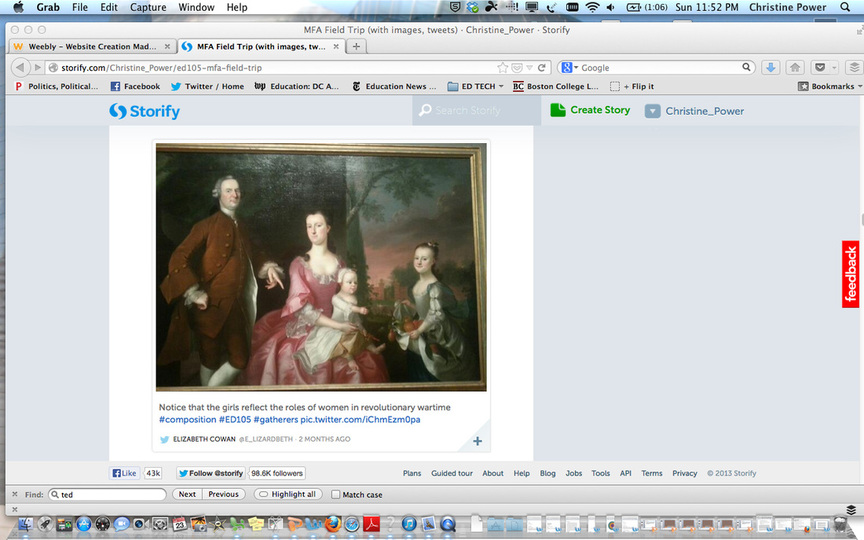Collective Storytelling Through Social Media
|
What is Social Media?
Social Media is an umbrella term that describes a variety of online tools that allow people to communicate. Rather than privileging a select few such as reporters, researchers, or government officials, Social Media tools allow anyone to document and share a story. The tools that can be used for social media communication vary, but typically follow under four categories:
|
|
Storify: "Everyone is now a reporter"

Storify takes the stance that "everyone is now a reporter" (Storify, 2013). This powerful free social networking tool allows users to collaborate to curate content and shape how a story is presented. Users can draw upon a wide variety of social networking resources including Twitter, Facebook, Instagram, and YouTube.
Within the classroom, Storify can be used by teachers or students to aggregate media content involving current events. Moreover, teachers can use Storify in conjunction other social networking sites such as Instagram or Twitter to document school events in real time. Below is an example of a Storify I created to document a class field trip to the Museum of Fine Arts, Boston.
Within the field trip, teams of students explored the Americas Wing analyzing artwork through a variety of lenses including color and medium. Students selected which works most intrigued them and using their cellphones, they tweeted or Instagrammed pictures to me along with their reflections and a pre-determined hashtag (#ED105).
Once we got home, I used the hashtag to locate all the pictures and comments related to the field trip and wove them together along with digital links to aspects of the MFA website. Students used the Storify to answer the essential question: "What does the art of the United States say about its culture?"
Once we got home, I used the hashtag to locate all the pictures and comments related to the field trip and wove them together along with digital links to aspects of the MFA website. Students used the Storify to answer the essential question: "What does the art of the United States say about its culture?"

